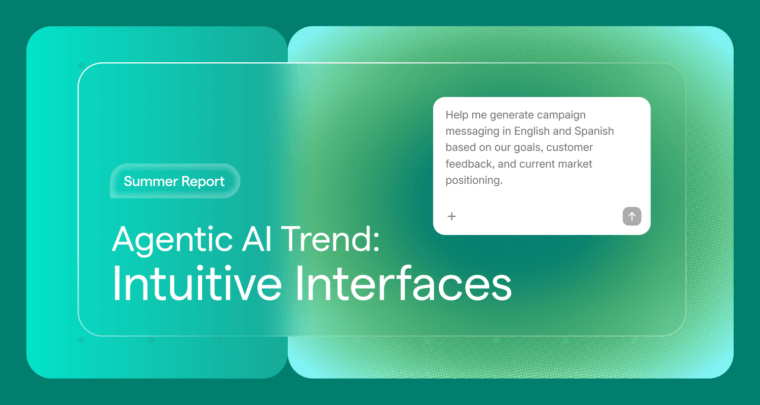
Classification is a core concept in data analysis and machine learning (ML). This guide explores what classification is and how it works, explains the difference between classification and regression, and covers types of tasks, algorithms, applications, advantages, and challenges.
Table of contents
- What is classification?
- Classification vs. regression
- Types of classification tasks in ML
- Algorithms used for classification analysis
- Applications of classification
- Advantages of classification
- Disadvantages of classification
What is classification in machine learning?
Classification is a supervised learning technique in machine learning that predicts the category (also called the class) of new data points based on input features. Classification algorithms use labeled data, where the correct category is known, to learn how to map features to specific categories. This process is also referred to as categorization or categorical classification.
To perform classification, algorithms operate in two key phases. During the training phase, the algorithm learns the relationship between input data and their corresponding labels or categories. Once trained, the model enters the inference phase, where it uses the learned patterns to classify new, unseen data in real-world applications. The effectiveness of classification largely depends on how these phases are handled and the quality of the preprocessed data available during training.
Understanding how classification algorithms manage these phases is essential. One key difference is how they approach learning. This leads us to two distinct strategies that classification algorithms may follow: lazy learning and eager learning.
Lazy learners vs. eager learners
Classification algorithms typically adopt one of two learning strategies: lazy learning or eager learning. These approaches differ fundamentally in how and when the model is built, affecting the algorithm’s flexibility, efficiency, and use cases. While both aim to classify data, they do so with contrasting methods that are suited to different types of tasks and environments.
Let’s examine the operations of lazy and eager learners to better understand each approach’s strengths and weaknesses.
Lazy learners
Also known as instance-based or memory-based learners, lazy learning algorithms store the training data and delay actual learning until a query needs to be classified. When one of these algorithms is put into operation, it compares new data points to the stored instances using a similarity measure. The quality and quantity of available data significantly influence the algorithm’s accuracy, with access to larger datasets typically improving their performance. Lazy learners often prioritize recent data, which is known as a recency bias. Because they learn in real time, they can be slower and more computationally expensive when responding to queries.
Lazy learners excel in dynamic environments where real-time decision-making is crucial, and the data is constantly evolving. These algorithms are well suited for tasks where new information continuously streams in, and there is no time for extensive training cycles between classification tasks.
Eager learners
Eager learning algorithms, in contrast, process all training data in advance, constructing a model before any classification tasks are performed. This upfront learning phase is typically more resource-intensive and complex, allowing the algorithm to uncover deeper relationships in the data. Once trained, eager learners do not need access to the original training data, making them highly efficient during the prediction phase. They can classify data quickly and handle large volumes of queries with minimal computational cost.
However, eager learners are less flexible in adapting to new, real-time data. Their resource-heavy training process limits the amount of data they can handle, making it difficult to integrate fresh information without retraining the entire model.
Later in this post, we will see how lazy and eager algorithms can be used in tandem for facial recognition.
Classification vs. regression: What’s the difference?
Now that we’ve explored how classification works, it’s important to distinguish it from another key supervised learning technique: regression.
Both classification and regression are used to make predictions based on labeled data from the training phase, but they differ in the type of predictions they generate.
Classification algorithms predict discrete, categorical outcomes. For example, in an email classification system, an email may be labeled as “spam” or “ham” (where “ham” refers to non-spam emails). Similarly, a weather classification model might predict “yes,” “no,” or “maybe” in response to the question “Will it rain tomorrow?”
Regression algorithms, on the other hand, predict continuous values. Rather than assigning data to categories, regression models estimate numerical outputs. For instance, in an email system, a regression model might predict the probability (e.g., 70%) that an email is spam. For a weather prediction model, it could predict the expected volume of rainfall, such as 2 inches of rain.
While classification and regression serve different purposes, they are sometimes used together. For instance, regression might estimate probabilities that feed into a classification system, enhancing the accuracy and granularity of predictions.
Types of classification tasks in ML
Classification tasks vary, each tailored for specific data types and challenges. Depending on the complexity of your task and the nature of the categories, you can employ different methods: binary, multiclass, multilabel, or imbalanced classification. Let’s delve deeper into each approach below.
Binary classification
Binary classification is a fundamental task that sorts data into two categories, such as true/false or yes/no. It is widely researched and applied in fields like fraud detection, sentiment analysis, medical diagnosis, and spam filtering. While binary classification deals with two classes, more complex categorization can be handled by breaking the problem down into multiple binary tasks. For example, to classify data into “apples,” “oranges,” “bananas,” and “other,” separate binary classifiers could be used to answer “Is it an apple?,” “Is it an orange?,” and “Is it a banana?”
Multiclass classification
Multiclass classification, also known as multinomial classification, is designed for tasks where data is classified into three or more categories. Unlike models that decompose the problem into multiple binary classification tasks, multiclass algorithms are built to handle such scenarios more efficiently. These algorithms are typically more complex, require larger datasets, and are more resource-intensive to set up than binary systems, but they often provide better performance once implemented.
Multilabel classification
Multilabel classification, also known as multi-output classification, assigns more than one label to a given piece of data. It is often confused with multiclass classification, where each instance is assigned only one label from multiple categories.
To clarify the difference: A binary classification algorithm could sort images into two categories—images with fruit and images without fruit. A multiclass system could then classify the fruit images into specific categories like bananas, apples, or oranges. Multilabel classification, on the other hand, would allow for assigning multiple labels to a single image. For example, a single image could be classified as both “fruit” and “banana,” and the fruit could also be labeled “ripe” or “not ripe.” This enables the system to account for multiple independent characteristics simultaneously, such as (“no fruit,” “no banana,” “nothing is ripe”), (“fruit,” “banana,” “ripe”, or (“fruit,” “banana,” “nothing is ripe”).
Imbalanced classification
Frequently, the data that’s available for training doesn’t represent the distribution of data seen in reality. For example, an algorithm might only have access to 100 users’ data during training, where 50% of them make a purchase (when in reality, only 10% of users make a purchase). Imbalanced classification algorithms address this problem during learning by using oversampling (reusing some portions of training data) and undersampling (underusing some portions of training data) techniques. Doing so causes the learning algorithm to learn that a subset of the data occurs a lot more or less frequently in reality than it does in the training data. These techniques are usually a kind of training optimization since they allow the system to learn from significantly less data than it would take to learn otherwise.
Sometimes accumulating enough data to reflect reality is difficult or time-consuming, and this type of optimization can allow models to be trained sooner. Other times, the amount of data is so large that classification algorithms take too long to train on it all, and imbalanced algorithms allow them to be trained anyway.
Algorithms used for classification analysis
Classification algorithms are well studied, and no single form of classification has been found to be universally appropriate for all situations. As a result, there are large toolkits of well-known classification algorithms. Below, we describe some of the most common ones.
Linear predictors
Linear predictors refer to algorithms that predict outcomes based on linear combinations of input features. These methods are widely used in classification tasks because they are straightforward and effective.
Logistic regression
Logistic regression is one of the most commonly used linear predictors, particularly in binary classification. It calculates the probability of an outcome based on observed variables using a logistic (or sigmoid) function. The class with the highest probability is selected as the predicted outcome, provided it exceeds a confidence threshold. If no outcome meets this threshold, the result may be marked as “unsure” or “undecided.”
Linear regression
Linear regression usually is used for regression use cases, and it outputs continuous values. However, values can be repurposed for classification by adding filters or maps to convert their outputs to classes. If, for example, you’ve already trained a linear regression model that outputs rain volume predictions, the same model can become a “rainy day”/”not rainy day” binary classifier by arbitrarily setting a threshold. By default, it’s only the sign of the regression result that’s used when converting models to binary classifiers (0 and positive numbers are mapped to the “yes” answer or “+1”, and negative numbers to the “no” answer or “-1”). Maps can be more complex and tuned to the use case, though. For instance, you might decide that any prediction above five ml of rain will be considered a “rainy day,” and anything below that will predict the opposite.
Discriminant analysis
Linear discriminant analysis (LDA) is another important linear predictor used for classification. LDA works by finding linear combinations of features that best separate different classes. It assumes that the observations are independent and normally distributed. While LDA is often employed for dimensionality reduction, it is also a powerful classification tool that assigns observations to classes using discriminant functions—functions that measure the differences between classes.
Bayesian classification
Bayesian classification algorithms use Bayes’ theorem to calculate the posterior probability of each class given the observed data. These algorithms assume certain statistical properties of the data, and their performance depends on how well these assumptions hold. Naive Bayes, for example, assumes that features are conditionally independent given the class.
KNN classification
The k-nearest neighbor (KNN) algorithm is another widely used classification method. Although it can be applied to both regression and classification tasks, it is most commonly used for classification. The algorithm assigns a class to a new data point based on the classes of its k nearest neighbors (where k is a variable), using a distance calculation to determine proximity. The k-NN algorithm is simple, efficient, and effective when there is local structure in the data. Its performance depends on selecting an appropriate distance metric and ensuring the data has local patterns that can aid in classification
Decision trees and random forests
Decision trees are a popular algorithm used for classification tasks. They work by recursively splitting the data based on feature values to make a decision about which class a given observation belongs to. However, decision trees tend to overfit the training data, capturing noise and leading to high variance. This overfitting results in poor generalization to new data.
To mitigate overfitting, random forests are used as an ensemble method. A random forest trains multiple decision trees in parallel on random subsets of the data, and each tree makes its own prediction. The final prediction is made by aggregating the predictions of all the trees, typically through majority voting. This process, known as “bagging” (a shortened word for bootstrap aggregation), reduces variance and improves the model’s ability to generalize to unseen data. Random forests are effective in balancing bias and variance, making them a robust off-the-shelf algorithm for classification tasks.
Applications of classification
Classification algorithms are widely used in various fields to solve real-world problems by categorizing data into predefined groups. Below are some common applications of classification, including facial recognition, document classification, and customer behavior prediction.
Facial recognition
Facial recognition systems match a face in a video or photo in real time against a database of known faces. They are commonly used for authentication.
A phone unlock system, for example, would start by using a facial detection system, which takes low-resolution images from the face-directed camera every few seconds, and then infers whether a face is in the image. The facial detection system could be a well-trained, eager binary classifier that answers the question “Is there a face present or not?”
A lazy classifier would follow the eager “Is there a face?” classifier. It would use all the photos and selfies of the phone owner to implement a separate binary classification task and answer the question “Does this face belong to a person who is allowed to unlock the phone?” If the answer is yes, the phone will unlock; if the answer is no, it won’t.
Document classification
Document classification is a crucial part of modern data management strategies. ML-based classifiers catalog and classify large numbers of stored documents, supporting indexing and search efforts that make the documents and their contents more useful.
The document classification work begins with the preprocessing of the documents. Their contents are analyzed and transformed into numerical representations (since numbers are easier to process). Important document features, such as mathematical equations, embedded images, and the language of the document, are extracted from the documents and highlighted for the ML algorithms to learn. This is followed by other similar processing tasks in the same vein.
A subset of the documents is then classified by hand, by humans, to create a training dataset for classification systems. Once trained, a classifier will catalog and classify all incoming documents rapidly and at scale. If any classification errors are detected, manual corrections can be added into the training materials for the ML system. Every once in a while, the classifier model can be retrained with the corrections added in, and its performance will be improved.
Customer behavior prediction
Online retail and e-commerce shops collect fine-grained and detailed information about their customers’ behavior. This information can be used to categorize new customers and answer such questions as “Is this new customer likely to make a purchase?” and “Will offering a 25% discount influence this customer’s buying behavior?”
The classifier is trained using data from previous customers and their eventual behavior, such as whether they made a purchase. As new customers interact with the platform, the model can predict whether and when they will make a purchase. It can also perform what-if analysis to answer questions like “If I offer this user a 25% discount, will they make a purchase?”
Advantages of classification
Classification offers several benefits in the machine learning domain, making it a widely used approach for solving data categorization problems. Below, we explore some of the key advantages of classification, including its maturity, flexibility, and ability to provide human-readable output.
Well-studied and understood
Classification is one of the most well-studied and understood problems in the machine learning domain. As a result, there are many mature toolkits available for classification tasks, allowing users to balance trade-offs between speed, efficiency, resource usage, and data quality requirements.
Standard techniques, such as accuracy, precision, recall, and confusion matrices, are available to evaluate a classifier’s performance. With these tools, it can be relatively straightforward to choose the most appropriate classification system for a given problem, assess its performance, and improve it over time.
Provide human-readable output
Classifiers often allow a trade-off between predictive power and human readability. Simpler, more interpretable models, such as decision trees or logistic regression, can be tuned to make their behavior easier to understand. These interpretable models can be used to explore data properties, enabling human users to gain insights into the data. Such insights can then guide the development of more complex and accurate machine learning models.
Disadvantages of classification
While classification is a powerful tool in machine learning, it does come with certain challenges and limitations. Below, we discuss some of the key disadvantages of classification, including overfitting, underfitting, and the need for extensive preprocessing of training data.
Overfitting
When training classification models, it’s important to tune the training process to reduce the chances that the model will overfit its data. Overfitting is a problem where a model memorizes some or all of its source data, instead of developing an abstract understanding of the relationships in the data. A model that has overfit the training data will work well when it sees new data that closely resembles the data it was trained on, but it may not work as well in general.
Underfitting
Classification systems’ performance depends on having sufficient amounts of training data available, and on being applied to problems that work well for the chosen classification algorithms. If not enough training data is available, or if a specific classification algorithm doesn’t have the right tools to interpret the data correctly, the trained model might never learn to make good predictions. This phenomenon is known as “underfitting.” There are many techniques available to try to mitigate underfitting, and applying them correctly is not always easy.
Preprocessing of training data
Many classification systems have relatively rigid requirements for data structure and formatting. Their performance is often closely correlated with how well the data has been processed before they are exposed to it or trained on it. As a result, classification systems can be rigid and inflexible, having strict boundaries around which problems and data contexts they are best suited to.






